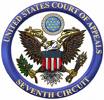 Part One: Supervised Release
Part One: Supervised Release
It’s been an eventful summer at the United States Court of Appeals for the Seventh Circuit in Chicago. In addition to deciding high-profile cases involving same-sex marriage and the validity of Wisconsin’s “Act 10” legislation, the Court has issued noteworthy opinions addressing criminal sentencing procedure and the law of evidence.
Seemingly out of the blue, the Court has signaled a new willingness to take a closer look at the imposition of supervised release conditions in federal criminal cases. Prosecutors, defense attorneys, judges, and probation officers will all be required to “up their game” in response to this new scrutiny.
Supervised release came into being in the mid-1980s as a replacement for parole. Unlike parole, which is a form of early release, the imposition of a term of supervised release extends the period during which a defendant is under a criminal sentence. Supervised release conditions, whether they are so-called “standard” conditions or “special” conditions tailored to a particular defendant, take effect after the defendant is released from prison, and often many years after the sentencing hearing takes place.
The sentencing revolution sparked by the Supreme Court’s decision in Booker did, of course, affect the calculation of a supervised release term. Guideline ranges for supervised release terms, like those for prison terms, are now advisory. United States v. Larson, 417 F.3d 471 (7th Cir. 2005). But the “main event” at any sentencing hearing is always the question of whether to impose a term of imprisonment and, if so, for how long? Supervised release conditions are all too often an afterthought, and even before Booker were consigned to a relatively sleepy appellate backwater. But see United States v. Mayes, 370 F.3d 703, 712 (7th Cir. 2004) (apropos of a condition restricting the defendant’s frequenting of taverns, the Court noted that the defendant would be 68 years old when released from prison and “[i]f he makes it that far, the poor fellow might well deserve a martini or a glass of Cabernet Sauvignon … or at the very least a visit to a local tavern”).
Just after Memorial Day in 2014, along came a decision in the companion cases of United States v. Siegel and United States v. Norfleet, 753 F.3d 705 (7th Cir. 2014). Siegel was convicted of child sexual abuse; Norfleet of possessing with the intent to distribute crack cocaine. In an opinion authored by Circuit Judge Richard Posner, the Court addressed the specific conditions of supervised release that it found problematic in each case. But it also offered an extended critique of supervised release conditions generally, describing them as proliferating, sometimes vague, and often not justified with reference to the underlying offense, the sentencing statute (18 U.S.C. § 3583), or “relevant criminological literature.” The opinion concludes with a list of recommended “best practices” for the imposition of supervised release conditions. In abbreviated form, the recommendations are as follows:
- Require the probation office to communicate its proposed conditions of supervised release to defense counsel at least two weeks before the sentencing hearing.
- Make an independent judgment of the appropriateness of the recommended conditions.
- Determine appropriateness with reference to the particular conduct, character, etc., of the defendant, rather than on the basis of loose generalizations about the defendant’s crime and criminal history.
- Make sure that each condition imposed is simply worded.
- Require that on the eve of his release from prison, the defendant attend a brief hearing before the sentencing judge (or his successor) in order to be reminded of the conditions of supervised release.
As a direct result of Siegel and Norfleet, sentencing procedure has already changed in the United States District Court for the Eastern District of Wisconsin. The recommendations of the U.S. Probation Office regarding supervised release conditions are now set forth in the Pre-Sentence Report (“PSR”), a document that is disclosed to the prosecutor and defense counsel prior to the defendant’s sentencing hearing. Previously, these recommendations were made in a sealed document that was submitted to the sentencing judge only.
Also (although the author of the Siegel/Norfleet opinion assumed just the opposite), it has been the unusual case in which attorneys discuss supervised release conditions as part of their plea negotiations. This, too, may change in light of Siegel and Norfleet and the wider sharing of the probation office’s supervised release recommendations. Shining a light on the issue of supervised release conditions earlier in the process may prompt discussion of whether a particular condition makes sense. This, in turn, may reduce the amount of appellate litigation about supervised release conditions.
For the time being, however, this is an area of keen interest for the Court, with several post-Siegel cases “in the pipeline.” The following decisions also reflect the Seventh Circuit’s new willingness to take a more searching look at supervised release conditions: United States v. Adkins, 743 F.3d 176 (7th Cir. 2014); United States v. Shannon, 743 F.3d 496 (7th Cir. 2014); United States v. Poulin, 745 F.3d 796 (7th Cir. 2014); United States v. Bryant, 754 F.3d 443 (7th Cir. 2014); United States v. Farmer, 755 F.3d 849 (7th Cir. 2014); United States v. Johnson, 756 F.3d 532 (7th Cir. 2014).
Part Two of this series will examine the Court’s recent en banc decision in United States v. Gomez, No. 12–1104, 2014 WL 4058963 (7th Cir. Aug. 18, 2014), which articulates a new standard for the admissibility of 404(b) or “prior bad acts” evidence.
